Flying to Hawaii during peak season, including over the holidays and in summer, isn’t cheap—especially when first-class tickets we found were priced between $1,370 and $1,884 round trip per person on our dates. Fares for peak season travel can be up to $3,600 or more roundtrip so that the savings can be up to 84%. Even at more typical first-class fares of $1600 to $2000, the savings would be 60 to 70 percent.
But instead of paying those eye-watering fares, why not fly round trip in great comfort for just $600 per person roundtrip? The catch? There wasn’t one.
We used several practical strategies that consistently turn economy Hawaii air travel into something arguably even better than domestic narrow-body first class. Here’s how.
First, the three-seat trick that made $300 flights possible.
The heart of our strategy was the three-seat trick, a simple but effective way to upgrade your comfort in economy without the first-class price tag. By purchasing three seats for two travelers, we ensured the middle seat in our row remained empty, giving us the extra space we needed to stretch out. In fact that is just as much space in width as is provided for first class narrow-body passengers. For more information, see Hawaii First Class Comfort at Economy Price.
In today’s post, we will tell you how it works and here’s why.
We’ve received many questions from readers questioning whether or not this works and exactly how to do it.
Reserve an Extra Seat, not a second seat in your name. This is doable on every airline flying to Hawaii except Southwest. That could change, however, when they start seat assignments.
United is the easiest since the extra seat can be purchased online as part of the regular purchase process. Select an additional passenger traveling on the reservation and then pick the extra seat option for that passenger rather than providing other passenger details.
You must book the extra seat over the phone with American, Delta, Alaska, and Hawaiian.
At the airport, it works the same way on every airline we’ve tried. You’ll need a boarding pass for the extra seat, which must be scanned when you board the plane. You won’t show that extra boarding pass for security.
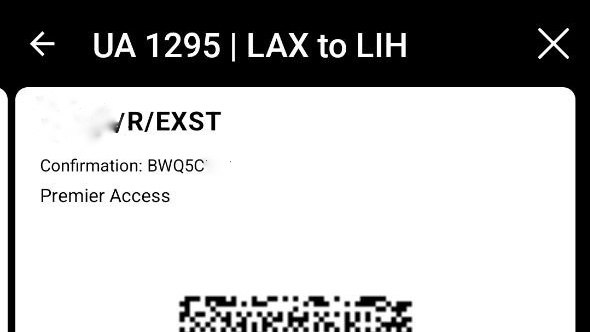

Reader Maleko summed it up well: “We’re with you in that first class to Hawaii is highly overrated. But the middle seat trick? It never crossed my mind until you guys rolled it out. Love it.” This strategy worked even on fully booked flights, as we always scanned all three boarding passes, ensuring no one could take the extra seat.
Another reader, Wolfe, voiced skepticism: “My fear of buying three seats is all of a sudden the ground agent comes on board, sees an open seat, and puts a human in it.” In response, we’ve had countless trips where this has never happened, and airlines are entirely familiar with honoring extra seat bookings.
Second, flying on less popular days saved us cash.
Timing is everything when booking peak season and holiday travel, and this was no exception. Flying on less desirable dates—December 25 in our case—made a huge difference in pricing. If we’d traveled on December 23, fares in economy alone would have been significantly higher, not to mention so would the cost of first class.
As reader Patrick shared, “I did this once on an AA flight from LIH to PHX… Got an extra legroom seat for my wife and me and bought the middle seat. They even discounted it a bit. It was very nice to have the empty seat and extra space.”
Booking on a sweet spot day to buy adds significantly to the savings.
We booked our tickets about a month in advance at the sweet spot for holiday travel pricing. Tuesdays often have better fares, and this proved true for us. We locked in our $600 total for three seats—or $300 per person by keeping an eye on price trends and striking at the right moment.
Reader Lauren noted, “This definitely sounds like an interesting option. I would have liked it if you had explained exactly how you do this when booking online.” For United, we found it straightforward to book the extra seat, which was clearly labeled as “Extra Seat” during the process. Other airlines may require a quick call to confirm.
Extra legroom is nice but not essential.
Thanks to frequent travel on United, we’ve reached Gold status, which allowed us to reserve Economy Plus seats with extra legroom at no additional cost. While this perk was a nice bonus, and provided as much legroom or more than does their first class, it wasn’t even essential. On a recent flight with American Airlines, we used the three-seat strategy without Economy Plus seats and found the experience nearly as comfortable.
As Rod W commented, “At its core, seat pitch equals legroom. Most airlines have seat pitch in economy of 29 to 32 inches. At 38 inches, I can stretch out.” For us, the extra space from the three-seat trick made the flight more enjoyable, even without premium seating.
Why this strategy works across airlines.
While we flew United this time, the three-seat trick worked on most major carriers. Southwest is currently the exception, but their upcoming switch to reserved seating could change that. American, Delta, and Hawaiian Airlines all accommodate this strategy with varying degrees of ease. See more on the three-seat trick at Save 73% | Cheap Alternative to First Class Hawaii Flights.
Reader John C. raised a common concern: “How do you purchase the middle empty seat? It seems like they might see your name in two seats.” The answer is that airlines allow you to book an extra seat under your name, and it will be marked as “Extra Seat” on the boarding pass. This ensures the seat remains yours throughout the flight.
How $300 beats $1,800 first class.
Even with narrow-body first-class tickets priced at $1,300 to $1,800 round trip during the holidays, we’ve found that the experience often doesn’t justify the cost. The seats are slightly wider, the service a touch more attentive—but the food? Editor Jeff sums it up: “Oh barf.” He always packs his own meals, regardless of class, airline, or route—domestic or international. The idea of relying on airline food for anything other than sustenance is just not in his travel playbook.
On a route like this, where narrow-body jets dominate, first class doesn’t bring the luxuries you might expect. As Rebecca put it in her comment, “I can’t envision actually paying for first class. Not worth it… 5.5 hours is a short flight.”
Instead, our $300-per-person strategy gave us space, comfort, and flexibility—without any disappointments that often come with narrow-body first class.
If you tried the extra seat trick, how did it work for you?
Get Breaking Hawaii Travel News
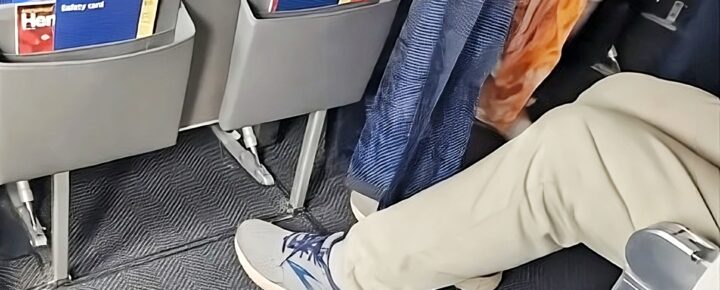

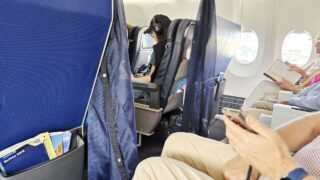
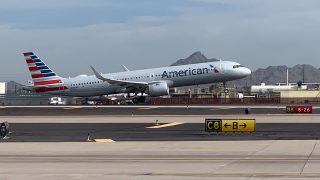
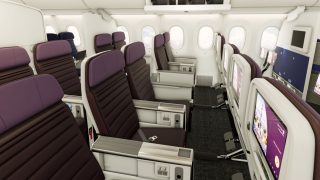
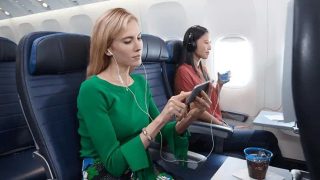

Buying the middle seat in coach may provide more elbow room but it is Not the same as first class!!!
I think doing this is selfish
If one books an extra seat, do you accrue mileage credit (miles, PQP, PQF, etc.) on the extra seat? Or is it just “dead weight” from a mileage plan perspective? Does it vary by airline? Maybe Beat of Hawaii should have a special link regarding the ins and outs of an extra seat?
Hi Aloha Mike.
That varies by the airline so check their rules. It’s easy to search to find those.
Aloha.
aloha guys, great ideas as always. I just wanted to say…we flew 1st class to the mainland RT earlier in the year on Hawaiian and the food was ONO! just saying. food not worth the price…..but.
next time, 3rd seat and our own food!
Ane T
Hi Ane.
Thanks for sharing your experience! Yes, with domestic narrow-body being what it is, that something that we keep doing over and over again because it works.
Aloha.
Do all the airlines listed have middle seats that have armrests that can be raised as opposed to non-moveable armrests that have the trays in the armrests?
Hi Rich.
Good question. It depends on the row, with exit ones often not having movable ones.
Aloha.
Bulkhead also mostly have tray tables in the armrests
We have been buying regular coach seats and upgrading with miles on Hawaiian and Alaska. Round trip for next spring cost us $480 per person for First Class because we used miles to upgrade.
What airlines allow you to book an extra seat online? Is it just United and is it easier to call instead?
I’ve done this a couple of times, including last summer to Hawaii. It’s a total game-changer for us. Makes economy feel almost luxurious and cuts way back on stress.
This would never work for me. I just can’t handle narrow-body planes to Hawaii, no matter how much extra space I have.
What happens if the flight is overbooked? Do airlines honor the extra seat you paid for?
We tried your three-seat trick last year, and it worked perfectly! Saved us so much money compared to first class. And we sure did not miss the airline food.
This sounds like a great strategy, but how do you make sure the airline doesn’t give the middle seat away?
While perhaps a boon to those wanting first class comfort for an economy plus (or whatever) price, might not that “trick” also shut out other travelers who don’t have that 3rd seat available to them. It’s also less efficient travel since it forces those who can’t book a “full” flight to book a different flight. Or how about families that can’t sit together when there’s two or three or more empty seats purchased by the faux first-classers? Just saying . . .
Families can plan ahead + book earlier. Like standing in line for Christmas tamales, the early bird (in line at 6 am) gets to choose 1st. Those at the end of the line get what is still there, even if it’s not the flavor or quantity they wanted (chicken, pork, jalapeno, cheese).
Aloha
I was wondering how it works for the general public. I wondered how boarding goes. Does one person swipe the pass for extra seat and swipe their own pass?
Mahalo
Hi Marilyn.
Yes you will swipe both at the boarding door and it is important to do that so that the airline knows you have taken that seat.
Aloha.